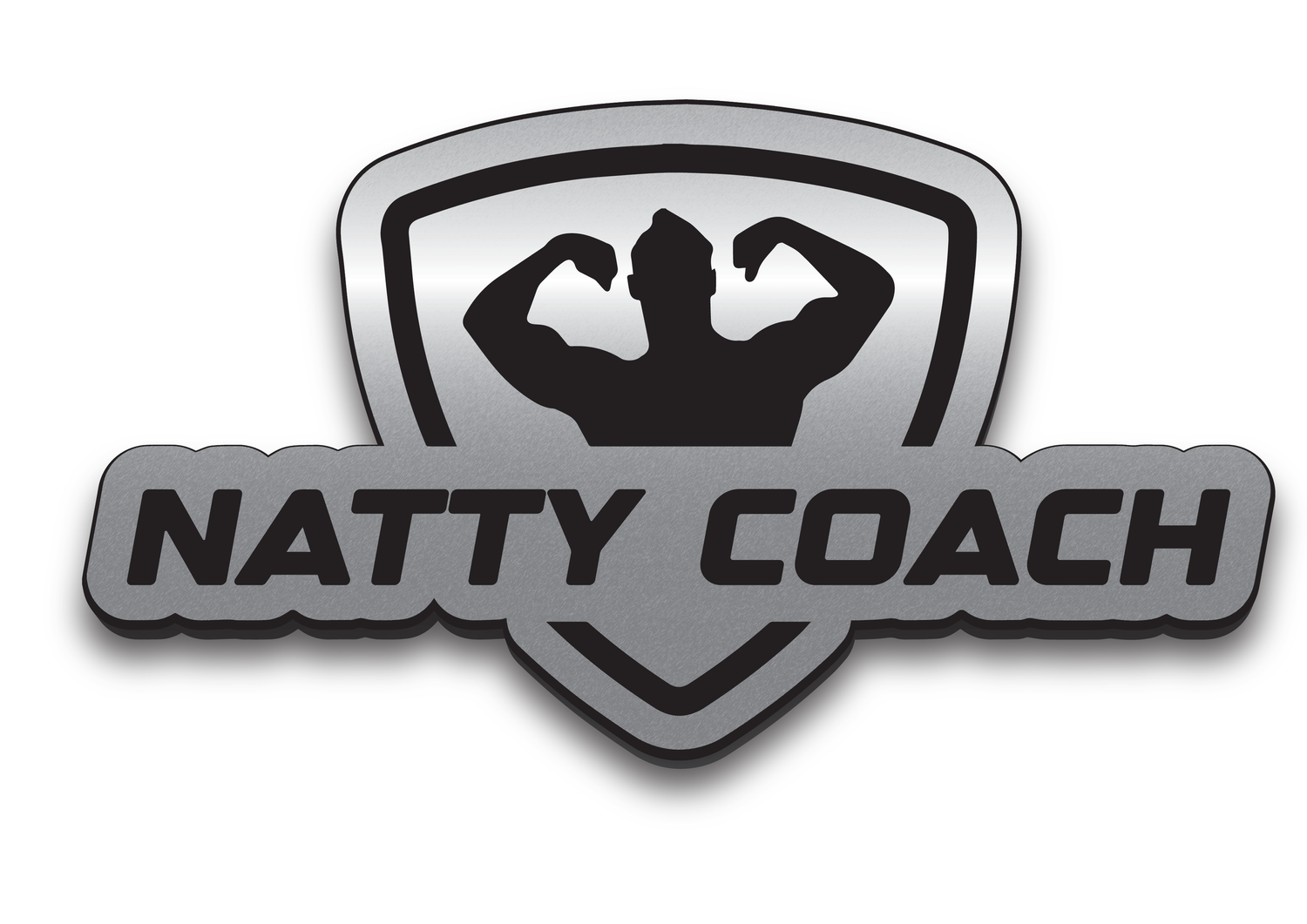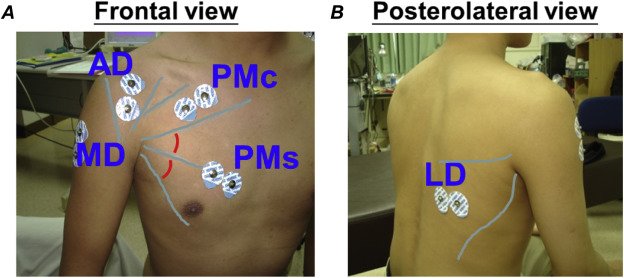How to Build a Powerful Chest
Dr. Andrew Chappell
This is a favourite chest workout of mine:
Now let’s talk about how to train the chest and why I selected the aforementioned exercises, sets, rest period, intensity and advanced training techniques.
Anatomy of the Chest
The chest is composed of two muscles: the pectoralis major and the pectoralis minor. The pectoralis major is a large, fan-shaped muscle that covers most of the chest and is responsible for the: adduction, flexion, and rotation of the arm. The pectoralis minor, as the name suggests is a smaller muscle located underneath the pectoralis major, and is involved in the protraction and depression of the shoulder blade. Training days that involve a large number of chest exercises are therefore typically referred to as press days.
Training the Chest
When it comes to training the chest, there are several exercises that can effectively target the pectoral muscles.
Incline Flat and Decline Positions
Incorporating both incline, flat and decline positions into your chest training can help to target different areas of the chest muscles. Incline exercises, such as incline dumbbell presses, target the upper portion of the chest, while decline exercises, such as decline barbell presses, target the lower portion of the chest. It’s a good idea to include a variety of these in any training plan and there’s a school of thought which suggests female athletes should only ever do incline since their upper pecs are only ever on show.
Dumbbells
Dumbbells are a versatile and allow for a wider range of motion and better targeting of the chest muscles compared to barbells. Dumbbell exercises like dumbbell fly’s and incline dumbbell presses allow for a greater stretch of the chest muscles which can help with overall development and shape. Conversely though people typically can’t generate as much force using dumbbells because of their inherent instability, which means you usually end up working with lower loads compared to barbells or machines.
Machines
Chest training machines, such as cable crossovers or pec deck machines, offer a more controlled movement, which can be beneficial for isolation of the chest muscles. These machines are also useful for training the adduction movement pattern and are typically safter than a traditional set of fly’s. Moreover, chest press machines and smith machines can also be useful and again typically safter alternatives to the bench press or incline press. Machines can be extremely useful when it comes to incorporating advanced training techniques.
Barbells
Barbell exercises, such as the barbell bench press, allow for the use of heavier weights and can help to increase overall chest strength and mass. Dips focused on targeting the chest are another exercise which can be extremely effective, and one which I’ve heard referred to as upper body squats. If it’s weight you want to shift, this is ultimately where you’re going to do most of it.
Chest Development
If you want to develop a powerful chest then you’re going to have to work the muscle group from all angles using a combination of free weights and machines.
Considerations for rep ranges and advance training techniques
Much has been written about rep ranges, and you should alter your rep range depending on your goal, e.g. strength hypertrophy endurance. However, I would say that if you want to improve your overall chest development then you need to increase your 1, 3, 5, 8, 10, 12, & 20 repetition max. Essentially you need to train all the rep ranges and you need to get good at them all. That doesn’t mean doing singles as part of your training plans, but it does mean that you have to spend some time lifting heavier and lighter. Using percentages of your 1 rep maximum (1RM) is a great way of doing this, alongside using scales like reps in reserve (RIR) or rate of perceived exertion (RPE). Moreover, with any plan, particularly bodybuilding you’re going to want to do some advanced training techniques, probably 1 or 2 a session.
Percentages of 1RM
Using percentages of your 1RM allows for more consistent progress tracking and the ability to target specific training goals. For example, training with lighter weight at a lower percentage of your 1RM (e.g. 60-70%) can help build endurance, while training with heavier weight at a higher percentage of your 1RM (e.g. 80-90%) can help improve muscle strength. The other great thing about percentages is they can keep you honest. The numbers don’t lie. I your program says use 80% of your 1RM then you know what out need to do.
Advanced Training Techniques
Advanced training techniques, such as supersets, negatives, rest-pause, cluster sets, and partials, can help increase intensity and provide a greater training stimulus. For example:
Supersets involve performing two exercises back-to-back with minimal rest in between, increasing the overall volume and intensity of your workout.
Negatives involve performing the eccentric (lowering) portion of an exercise with a slow, controlled motion, putting extra stress on the muscles and promoting muscle growth.
Rest-pause involves performing a short set, resting briefly, and then repeating the same set, leading to increased muscle fatigue and a greater training stimulus.
Cluster sets involve performing multiple reps with short rests in between, allowing for heavier weight to be used and promoting strength gains.
Partials involve performing only a portion of the range of motion of an exercise, allowing for heavier weight to be used and targeting specific muscle fibers.
It's important to note that these advanced training techniques should be used judiciously, as they can increase the risk of injury and lead to overtraining if used excessively. It's recommended to start with a solid foundation of proper form and progress gradually, incorporating these techniques as appropriate for your goals and abilities. Depends on the goal of the session, the program and the individual, you’ll incorporate a variety of these movements into any program. I talked extensively about this in the bicep training article. If I was pressed though…(pun intended) I’d always er towards the use of the barbells chest press as a great exercise for any program for the following reasons.
Why The Bench Press is King
The barbell bench press is used to increase muscle mass in the upper body rather than specifically to the pectoralis major. Although you sometimes might break a training programs down into bodypart specific days e.g. chest, shoulders, arms etc. I always suggest focusing on compound moves in any program for the following reasons:
A classic physique requires the training of both the small and big muscle groups. Freeweights are key to hitting those small muscles
A) These exercise usually provide the most bang for their buck for the primary muscle group in question as well as the auxiliary muscles, (something which is important for reduced frequency training)
B) With A in mind, a focus on these lifts in our experience of judging competitors usually leads to a far more symmetrical physiques, they just seem to flow better. This often happens because of hitting the shoulders, triceps, forearms, upper back, and core training you get from a movement like a barbell press compared to say using a chest press machine. Moreover, this is probably why you see people with poor technique suffering from poor symmetry.
C) To develop a classic physique, we’re big fans of utilising free weights in keeping with golden era principles. That’s not to say that we can’t use machines and every individual has different needs (injuries are a consideration), but free weights form the cornerstone of a golden era approach to programming.
EMGs and Chest Training Science
You can measure muscle activation using EMGs. Studies have measured which exercises are the most effective when it comes to recruitment.
Activation is another interesting question, Electromyographs (EMG) allow you to measure muscle activation across a muscle while exercising. Muscle activation is greater with stable vs unstable loads, and the amount of weight or force participants can generate is also greater. Moreover, exercise intensity in terms of rate of perceived exertion is usually greater with stable surfaces. The ability to produce a high RPE seems to be essential for hypertrophy independent of the load, although high degrees of mechanical tension are also important. For these reasons barbells are usually considered superior to dumbbells or machines. Although it’s not quite as clear cut as you think. Here’s a sample of some studies bellow that are representative of the area:
No difference between motor unit activation between Dumbbell flys, Dumbbell chest press, Barbell Bench Press.
Welsch, E.A., Bird, M. and Mayhew, J.L., 2005. Electromyographic activity of the pectoralis major and anterior deltoid muscles during three upper-body lifts. Journal of Strength and Conditioning Research, 19(2), p.449.
EMG Activation is related to the instability of the exercise, where barbell and bench conditions perform better than dumbbell and swiss ball conditions.
Kohler, J.M., Flanagan, S.P. and Whiting, W.C., 2010. Muscle activation patterns while lifting stable and unstable loads on stable and unstable surfaces. The Journal of Strength & Conditioning Research, 24(2), pp.313-321.
Barbell bench press EMG and RPE activation is greatest by comparison to eight other chest exercises
Schanke, W., 2012. Electromyographical analysis of the pectoralis major muscle during various chest exercises(Doctoral dissertation).
Stable loads result in similar EMGs in pectoralis major with Dumbbell, barbell and smith machine, although triceps EMG activation is greater in barbell vs dumbbell and smith machines
Saeterbakken, A.H., van den Tillaar, R. and Fimland, M.S., 2011. A comparison of muscle activity and 1-RM strength of three chest-press exercises with different stability requirements. Journal of sports sciences, 29(5), pp.533-538.
Flat vs incline vs decline bench press variation indicates limited difference on pectoralis major activation although influences bicep EMG, while grip variations affect triceps EMG. Flat, medium and wide grip variations are suggested for greatest 6 RM loads.
Saeterbakken, A.H., Mo, D.A., Scott, S. and Andersen, V., 2017. The effects of bench press variations in competitive athletes on muscle activity and performance. Journal of human kinetics, 57(1), pp.61-71.
Wider Grips vs narrow grips result in the greatest pectoralis major activation. Hence the need to alter the grip when hitting the triceps.
Jagessar, M. and Gray, M., 2010. Optimizing development of the pectoralis major. Sport Journal, 13(1), p.7.
Muscle activity changes with exercise intensity, velocity of movement, fatigue, mental focus, movement phase and stability conditions, such as bar vibration or unstable surfaces. The most important factor for EMG activation is exercise intensity. E.g external load or RPE.
Stastny, P., Gołaś, A., Blazek, D., Maszczyk, A., Wilk, M., Pietraszewski, P., Petr, M., Uhlir, P. and Zając, A., 2017. A systematic review of surface electromyography analyses of the bench press movement task. PloS one, 12(2).
Conclusions
It’s important to train the chest using a variety of different techniques. So long as you use a combination of freeweights and machines, combined with different rep ranges and advance training techniques your chest will develop over time. As I always say, technique is key. So make sure that form is excellent and avoid using half reps and ego training. If you can’t lift it, then go lighter, you’ll be able to lift the heavier weights eventually so don’t take short cuts. Below is a sample training plan for a chest training routine. If you follow this for 6 to 8 weeks you can expect to see an improvement in your chest development.
Day 1:
Barbell Bench Press: 3 sets of 8-12 reps
Dumbbell Flys: 3 sets of 8-12 reps
Push-Ups: 3 sets of 8-12 reps
Day 2:
Incline Dumbbell Press: 3 sets of 8-12 reps
Dips: 3 sets of 8-12 reps
Cable Crossovers: 3 sets of 8-12 reps
As always if you find this content useful then get in touch. We can hold you accountable and make sure where you get to your goals faster than you would do if you were training by yourself. (Click Here)





